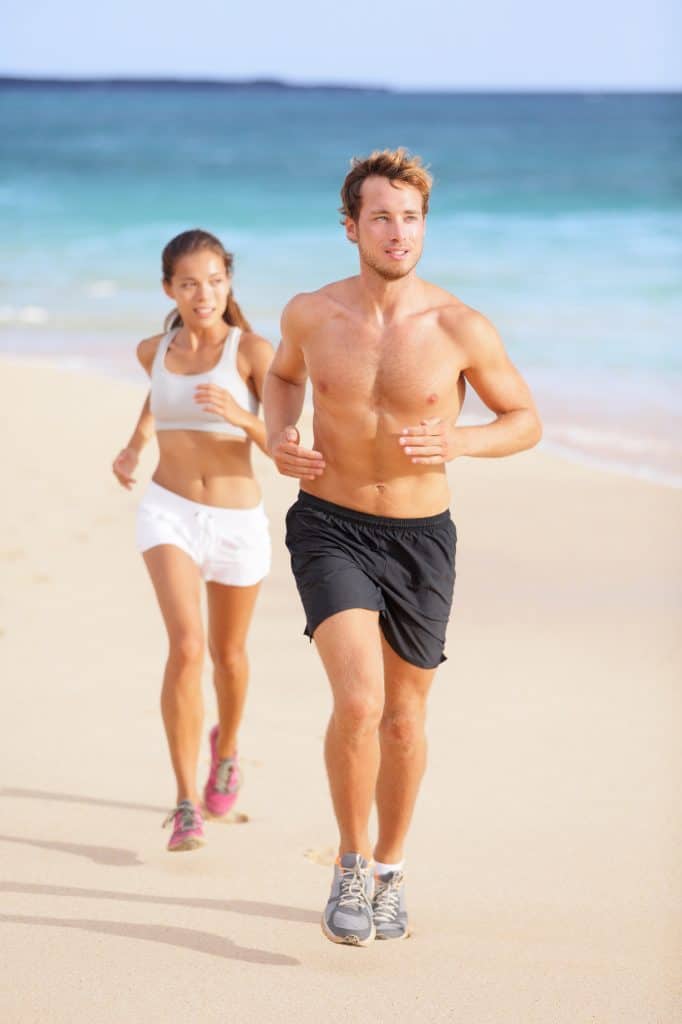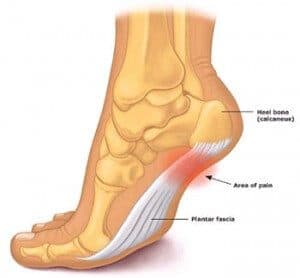
Barefoot Running/Minimalist Shoes

Running without shoes, or Barefoot running, has become popular recently. The concept behind it is that it promotes a midfoot strike instead of a heel strike. This change is foot strike can reduce the compressive load and help reduce injury.
Professional trainers can determine if this type of running works for you and provide exercises to help transition into it. Shoes designed for barefoot running can be purchased which offer no support or cushion, but provide some protection from sharp surfaces or objects.
Minimalist Shoe
Shoe companies also design “minimalist” shoes that compare to barefoot running. A typical running shoe has a 10-12mm heel to reduce compressive load. A minimalist shoe has less cushion, which causes a lower heel to toe drop. This causes the runner to strike with the front of the foot and not the heel.
Seek a Professional
Determining what type of runner you are and what shoe suits you can be evaluated by a professional. If you decide to evaluate this on your own, observe your footprint after coming out of the shower or pool. A wide foot corresponds with a pronated foot, whereas if the footprint is missing the inside of the foot, you have a supinated foot type.
Knowing your foot type is the initial step in purchasing the correct shoe, but this may be better magnified during running. A professional can analyze this based on your movement patterns.
Benefits Of Running Barefoot!
1. Promotes Recovery
Barefoot jogging is also a good option for those who are injured but still need to exercise regularly.
Regular shoes force you to fall on your heel, which can lead to an imbalance and strains and injuries.
As a result, many coaches and physical therapists advise jogging barefoot.
It will relieve any tension and prevent fractures. It will also aid in the rehabilitation of runners and keep them safe from additional danger.
2. Prevents Plantar Fasciitis
In a roundabout approach, barefoot running may aid in the prevention of plantar fasciitis (pain in the bottom of your foot near your heel). Why?
Running with bare feet, as previously said, typically leads to improved technique and cadence. Your plantar fascia might be strained by sloppy running form.
Bad running technique causes inefficient muscle firing patterns in the lower leg, which can lead to overuse injuries like plantar fasciitis.
3. Burns More Calories
Running shoes have springy soles that help propel you forward. When you remove the shoes, the beneficial bounce vanishes.
Because barefoot running is more difficult and taxing, there’s a strong probability you’ll burn more calories doing it.
4. You Will Be Connected To The Nature
What better way to connect with mother nature than to feel it while running your heart out?
Some people believe that running barefoot gives them a sense of connecting to the land and makes them feel closer to their actual selves.
For people who are fatigued from the daily grind of the metropolitan environment, this type of activity can lighten their load and relieve stress.
5. Improves Blood Circulation (Especially In Feet)
Barefoot running, according to another study published in the Journal of Alternative and Complementary Medicine, can improve blood circulation.
This advantage is connected to the stimulation of latent muscles while jogging barefoot.
Once these muscles are recruited, blood flow is easier, oxygen transfer is easier, and the risk of heart disease is reduced.
Current Podiatric Thoughts on Barefoot Running
Much of the current literature, based on research is against barefoot running. Especially if running outdoors, the risks do not outweigh the benefits.
Barefoot and Minimalist shoes are the best for babies and small children, however, to strengthen the smaller muscles of the feet.
For evaluation and management of your feet see a Podiatrist.
How does age influence the feasibility of transitioning to barefoot running?
Age can influence the feasibility of transitioning to barefoot running, and it’s important to consider various factors associated with age when making such a transition. Here are some considerations:
- Muscle Strength and Flexibility:
– Younger individuals often have more adaptable muscles and greater flexibility, which may facilitate a smoother transition to barefoot running.
- Joint Health:
– Older individuals may have different considerations related to joint health. It’s important to assess the impact of barefoot running on joints, especially if there are pre-existing conditions.
- Bone Density:
– Bone density tends to decrease with age, and individuals should be cautious about the potential impact of barefoot running on bones, particularly in older age groups.
Can barefoot running improve proprioception and balance?
Yes, barefoot running can contribute to the improvement of proprioception and balance. Proprioception refers to the body’s ability to sense its position in space and is closely linked to balance. Here’s how barefoot running can positively impact these aspects:
- Increased Sensory Input:
– Running barefoot allows the feet to directly sense and respond to the ground. This increased sensory input helps the nervous system better understand the terrain, leading to improved proprioception.
- Stimulation of Foot Muscles:
– Barefoot running engages the intrinsic muscles of the feet and lower legs, promoting strength and responsiveness. Stronger foot muscles contribute to better control and stability.
- Enhanced Joint Awareness:
– Running without the cushioning and support of traditional shoes requires greater joint awareness. This heightened awareness contributes to improved proprioception as the body adapts to changes in surface and terrain.
Is there a recommended distance or duration for starting barefoot running?
For individuals starting barefoot running, it’s crucial to begin gradually to allow the body to adapt. Start with short distances, such as 0.5 to 1 mile, on a soft, forgiving surface like grass or a well-maintained trail.
Call Beaver Valley Foot Clinic at 878-313-3338 today!
